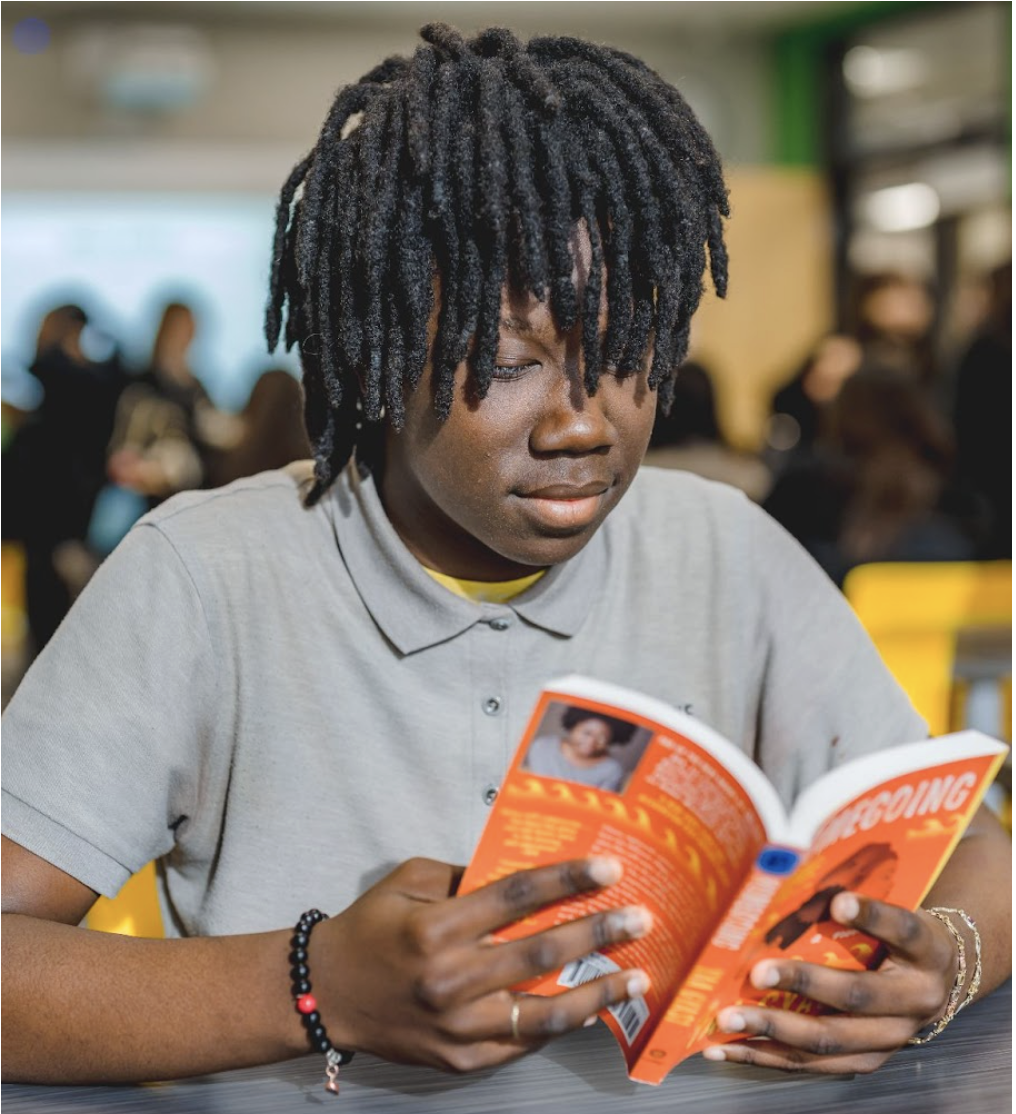Make it Worth it for Them to Come to School

As we discussed in our blog last week, high schools across the country have taken the critical step of prohibiting the use of cell phones in their classrooms.
Yet, these restrictions are not enough to get students engaged. Chronic absenteeism (missing 18 days or more) has nearly doubled since 2018. On the most recent 9th grade STAAR assessments in Texas, 40% of students did not even try to answer the longer response questions.
High school English teachers often hear many of these skeptical students ask, “But, how does reading The Great Gatsby prepare me for the real world?”
Often we have responded too literally: Write this essay and you’ll be ready to write persuasive emails at your first job. Not surprisingly, the hope of writing a good memo does not energize an adolescent. Another strategy to get students to put words on the page is to give them scaffolds like graphic organizers or elaborate grading rubrics. These tools make writing feel like a check-the-box activity—something they should do to please the teacher.
At Riveting Results, when students are first building their ideas, we do not have them use graphic organizers before they write. Instead, we teach them to sit for at least 15 minutes and write about a short excerpt, pulling out whatever they notice from the excerpt. Their peers and their teacher respond to their writing by telling them what has made them curious. Practicing this process two or three times a week throughout the year, students develop confidence that if they write about an excerpt for fifteen minutes they will develop an interesting insight.
When you read Devon’s two writing samples below, written four weeks apart, notice the change in her assertiveness.
In her first sample she restates the question, ending her first sentence with the bland “in many ways”. She probably learned this in elementary school, with “R” (for “restate”) being the first letter of a mnemonic device. At the end of the passage, she has enough time only to begin to articulate her insight that singing was a uniquely poignant expression of a slave’s pain (in added italics below):
Find a sentence and explain how Douglass helps you understand how the enslaved people’s singing reveals the “soul-killing” effects of slavery.
Douglass helps me understand that the enslaved people singing reveals the effects of slavery in many ways. Through a specific sentence that helps me the most would be, “It is impossible to conceive of a greater mistake. Slaves sing most when they are most unhappy. The songs of the slave represent the sorrows of his heart, and he is relieved by them, only as an aching heart is relieved by its tears.” (Ch.2, p.10) This is able to help me understand how even though they are singing in the most joyous tone, they will continue to be in pain and agony. The enslaved people may sing just to try to look on the better side of things, but even so the way they sing will be to express pain and will always be the opposite of what they mean and feel.
In her second writing sample, freed from her prior, more mechanical approach, Devon spends far more time developing her own insight. She is ultimately able to connect Douglass’ physical experience with his profound intellectual and emotional shift (in added italics below).
After his fight with Covey in the barn, Douglass asserted that he was a slave “in form,” he was no longer a slave “in fact.” Explain the difference between a slave in fact and a slave in form with examples from this section.
When Douglass says that he was a slave “in form” he is referring to that as how he is legally considered a slave. While when he mentions that he was no longer a slave “in fact” that was more considering his well being and how he felt. In the book at the beginning of paragraph 12 it says, “It rekindled the few expiring embers of freedom and revived with me a sense of my own manhood. It recalled the departed self-confidence, and inspired me again with a determination to be set free.” This quote goes more into about how he felt as a slave and his realizations during the fight with Mr. Covey. It shows how he is no longer considering himself as a slave which connects with no longer being a slave “in fact.” Douglass believed and felt that he was now free rather than being a slave since he was in control over himself and was able to win against Covey. Though he will still technically be considered a slave as he continues his time and physically being a slave.
Writing activities that leverage an adolescent’s desire to develop their own insights and impact their peers will engage them in their high school English class.
We want to know what you think.
We recommend you read these next
Meet The Team
The Riveting Results program works because it incorporates feedback from dozens of educators experienced in the classroom and in running schools. Unlike other programs that primarily use academic experts to review materials, Riveting Results gets feedback from educators who have actually used Riveting Results in the classroom to develop students reading and writing performance.
contact us



































